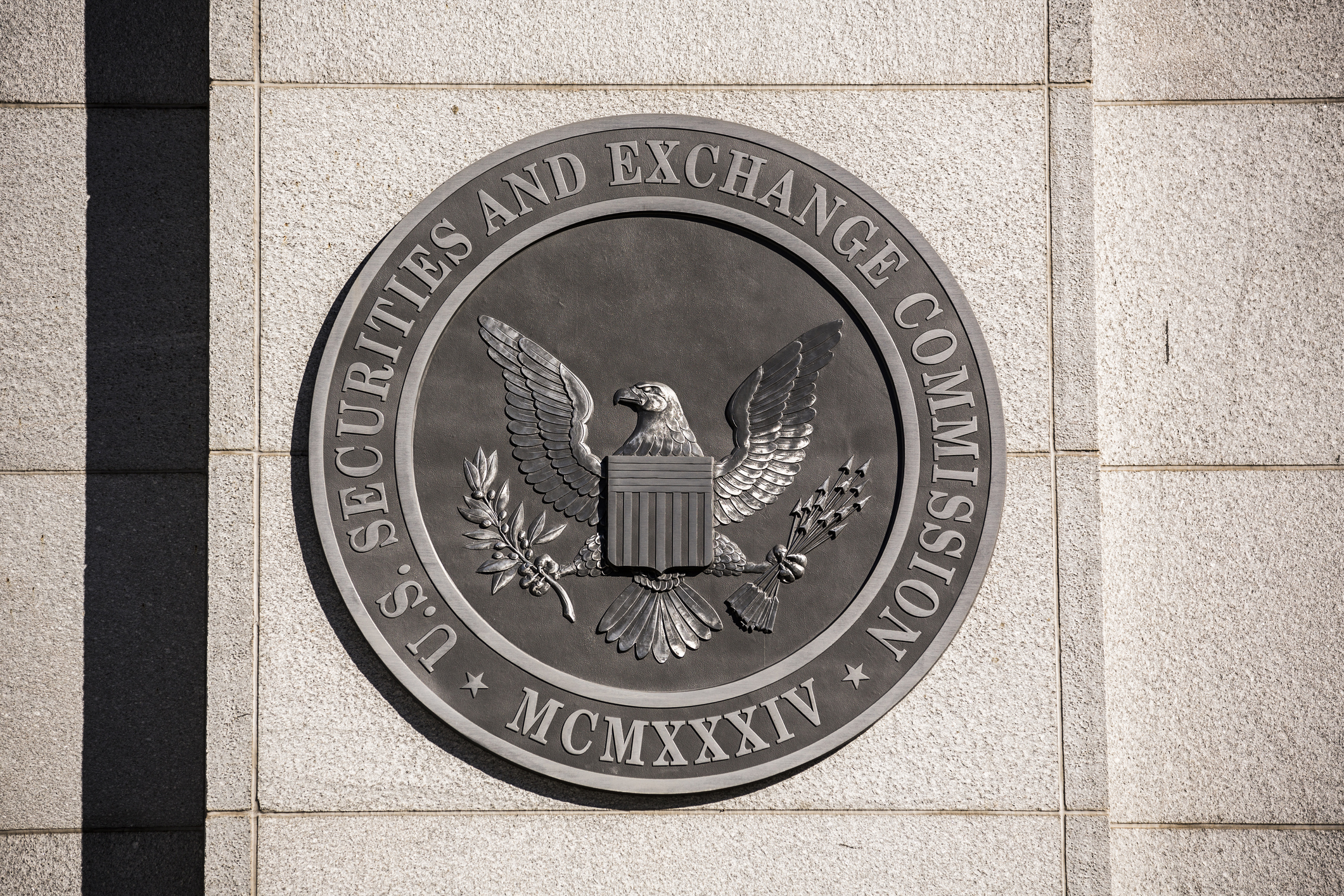Dow Rises 585 Points on Rate Cut Hope: Stock Market Today
Stocks moved more than 1% again Monday, this time to the upside following the Jobs Friday sell-off.



The main U.S. equity indexes gapped up with authority at Monday's opening bell and sustained 1%-plus gains through the close. This marked a reversal from recent weakness as renewed hope for a rate cut sooner rather than later offset fear of what a softening labor market means for the broader economy.
The question for the September 16-17 Federal Open Market Committee meeting is now not so much if the central bank will make a move but how big the next Fed rate cut will be.
Federal funds rate futures pricing now shows an 85.5% probability the central bank will cut interest rates by 25 basis points at the conclusion of the next Fed meeting. But a growing number of market participants are talking about a double cut, including BlackRock Global Chief Investment Officer of Fixed Income Rick Rieder.
From just $107.88 $24.99 for Kiplinger Personal Finance
Become a smarter, better informed investor. Subscribe from just $107.88 $24.99, plus get up to 4 Special Issues

Sign up for Kiplinger’s Free Newsletters
Profit and prosper with the best of expert advice on investing, taxes, retirement, personal finance and more - straight to your e-mail.
Profit and prosper with the best of expert advice - straight to your e-mail.
"If slack in the labor force builds at all, or we continue to see a below 100,000 jobs hiring rate persistently," Rieder writes of Friday's soft jobs report, "we would expect the Fed to start moving rates lower, and a 50-basis-point cut in September might be possible depending on how the data evolves."
As Rieder adds, "Inflation obviously will be a big metric for the Fed (and us) to monitor and presumably react to as well."
According to Goldman Sachs Chief Economist Jan Hatzius, Friday's jobs report "confirms that the U.S. economy is near stall speed." Hatzius forecast 75 basis points of cuts by the end of the year, including 25 basis points in September, October and December.
"A 50-basis-point move is possible if the unemployment rate climbs further in the next report," Hatzius concludes. The Bureau of Labor Statistics, presumably under new leadership, will release the employment situation report for August on Friday, September 5.
The Federal Open Market Committee doesn't meet in August on account of the annual Jackson Hole Monetary Symposium hosted by the Kansas City Fed later this month.
Whether or not today's price action is all about monetary policy, how to invest for a fall rate cut by the Fed? remains one of the most interesting questions in financial markets right now.
By the closing bell at the beginning of a comparatively light week on the economic calendar, the blue-chip Dow Jones Industrial Average was up 1.3% to 44,173.
The broad-based S&P 500 Index rose 1.5% to 6,329, and the tech-heavy Nasdaq Composite had added 2.0% to 21,053.
ON is off
Uncertainty about demand from its key end-market is perhaps one of the factors keeping ON Semiconductor (ON, -15.6%) off the list of best semiconductor stocks to buy – and it was the worst-performing stock in both the S&P 500 and the Nasdaq-100 Monday.
ON reported second-quarter earnings of 53 cents per share, down from 96 cents for the second quarter of 2024 but in line with a FactSet-compiled consensus. Revenue of $1.47 billion was down from $1.74 billion a year ago but above the FactSet estimate of $1.45 billion.
ON stock is now down 9.9% year to date and 16.4% over the trailing 12 months, falling along with demand for its chips from the auto industry.
Management said revenue from the auto industry during the three months ending June 30 was $733.2 million, above a forecast of $716 million but ON's lowest total since the first quarter of 2022.
"We are beginning to see signs of stabilization across our end markets, and we remain well-positioned to benefit from a market recovery," CEO Hassane El-Khoury said in a statement.
Management forecast third-quarter EPS of 54 cents to 64 cents on revenue of $1.47 billion to $1.57 billion. Wall Street expects EPS of 58 cents on revenue of $1.50 billion.
Buffett and Berkshire still have a lot of cash
Berkshire Hathaway (BRK.B, -2.9%) said Saturday it had $344 billion in cash and equivalents on its balance sheet as of June 30, plenty to fund potential deals and add more Warren Buffett stocks.
According to its second-quarter 10-Q, Berkshire bought approximately $4 billion worth of stock and sold approximately $7 billion for net sales of $3 billion. Warren Buffett's company did not buy back any of its own shares during the quarter.
Semafor reported July 21 that Berkshire's BNSF is working with Goldman Sachs (GS, +2.3%) "to explore a takeover of a rival" railroad, reported by CNBC, Barron's and others to be CSX (CSX, +1.3%).
Last week, Union Pacific (UNP, +1.2%%) announced it will acquire Norfolk Southern (NSC, +1.2%) for approximately $85 billion, or $320 per share.
Upon completion, a combined Union Pacific-Norfolk Southern transcontinental railway would have an enterprise value of approximately $250 billion.
Related content
- Figma IPO: Should You Buy FIG Stock?
- Earnings Calendar and Analysis for This Week (August 4-8)
- Kiplinger's Economic Calendar: This Week's Reports and Results
Profit and prosper with the best of Kiplinger's advice on investing, taxes, retirement, personal finance and much more. Delivered daily. Enter your email in the box and click Sign Me Up.

David Dittman is the former managing editor and chief investment strategist of Utility Forecaster, which was named one of "10 investment newsletters to read besides Buffett's" in 2015. A graduate of the University of California, San Diego, and the Villanova University School of Law, and a former stockbroker, David has been working in financial media for more than 20 years.
-
 'Humbug!' Say Consumers, Despite Hot GDP: Stock Market Today
'Humbug!' Say Consumers, Despite Hot GDP: Stock Market Today"The stock market is not the economy," they say, but both things are up. Yet one survey says people are still feeling down in the middle of this complex season.
-
 The SEC Is Concerned for Older Investors and Retirement Savers. Here's What You Should Know
The SEC Is Concerned for Older Investors and Retirement Savers. Here's What You Should KnowThe SEC focusing on older investors, retirement and college savers, and private securities. Here's how those changes impact you.
-
 Vesting, Catch-Ups and Roths: The 401(k) Knowledge Quiz
Vesting, Catch-Ups and Roths: The 401(k) Knowledge QuizQuiz Test your understanding of key 401(k) concepts with our quick quiz.
-
 'Humbug!' Say Consumers, Despite Hot GDP: Stock Market Today
'Humbug!' Say Consumers, Despite Hot GDP: Stock Market Today"The stock market is not the economy," they say, but both things are up. Yet one survey says people are still feeling down in the middle of this complex season.
-
 The SEC Is Concerned for Older Investors and Retirement Savers. Here's What You Should Know.
The SEC Is Concerned for Older Investors and Retirement Savers. Here's What You Should Know.The SEC focusing on older investors, retirement and college savers, and private securities. Here's how those changes impact you.
-
 Why You Should Pay Attention to Company Guidance
Why You Should Pay Attention to Company GuidanceUnderstanding how corporate profit forecasts affect analysts’ estimates and stock ratings can help you make investment decisions.
-
 How to Protect Yourself and Others From a Troubled Adult Child: A Lesson from Real Life
How to Protect Yourself and Others From a Troubled Adult Child: A Lesson from Real LifeThis case of a violent adult son whose parents are in denial is an example of the extreme risks some parents face if they neglect essential safety precautions.
-
 To Build Client Relationships That Last, Embrace Simplicity
To Build Client Relationships That Last, Embrace SimplicityAs more automation becomes the norm, you can distinguish yourself as a financial professional by using technology wisely and prioritizing personal touches.
-
 Client Demand Is Forcing Financial Advisers to Specialize: How to Deliver
Client Demand Is Forcing Financial Advisers to Specialize: How to DeliverThe complexity of wealthy clients' needs — combined with AI and consumer demand — suggests the future of financial planning belongs to specialized experts.
-
 Stocks Rise to the Spirit of the Season: Stock Market Today
Stocks Rise to the Spirit of the Season: Stock Market TodayInvestors, traders and speculators are beginning to like the looks of a potential year-end rally.
-
 A Financial Planner Takes a Deep Dive Into How Charitable Trusts Benefit You and Your Favorite Charities
A Financial Planner Takes a Deep Dive Into How Charitable Trusts Benefit You and Your Favorite CharitiesThese dual-purpose tools let affluent families combine philanthropic goals with advanced tax planning to generate income, reduce estate taxes and preserve wealth.